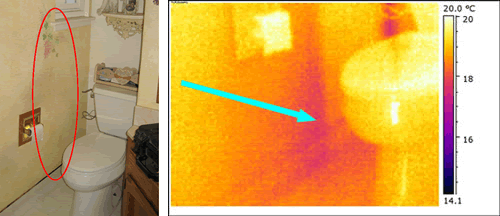
Water Intrusion Investigation & Repair
Let’s face it; water is the most critical substance to support the
existence of life. That very element can be the worst enemy to
the property owner. Weather related water damages, plumbing breaks and faulty
appliance parts are just some of the things that can happen and there is never
a good time for it. Murray Construction Services, Inc. can find
it, solve it and put it all back together…the right way.
Leaking windows, failed
siding and stucco, improper flashings…from the isolated incident to an entire
development, Murray Construction Services, Inc. can help you with the problems
the developer doesn’t want you to know about.
Building Defect Investigation & Repair
Unfortunately the construction defect is a common
occurrence in new construction and is not obvious
until years later after major damage has been done.
Faulty workmanship, use of inferior materials, site
planning, and engineering are just some of the things that can lead
to hidden nightmares for the single family homeowner and the common
interest development community.
Common Building Defects:
• Stairs and Landings
• Windows
• Patio Sliding Glass Doors
• Roofs
• T1-11 Siding and Stucco Systems
• Balconies
• Flashing and waterproofing Systems
• Foundations
Case Study:
Water Intrusion Investigation
and IR Report.
The following investigation report is
for water damage found at the master bathroom soffit over the
toilet area. Initial inspection was performed using an infrared
camera to produce a heat diagram or a visible image utilizing
the infrared spectrum as a means of monitoring and diagnosing
the condition of the building. A wet spot, when observed with
an infrared camera, is visible in the following thermal images
as a distinct dark or “cold” spot. Please note that because
some surfaces are reflective and can give false readings, a
non-penetrating moisture detector was used to back up our findings.
Master Bedroom/Bathroom Area
During our initial investigation visible water damaged sheetrock
was present at the soffited area above the toilet. In the thermal
image below, moisture saturation was found at the soffit and
the upper left wall next to the toilet.

Digital Image of moisture termination point. (left photo)
IR Image of wet soffit and moisture saturated
wall above and at left
of toilet. (right photo)
Second Floor Common Bath
During further investigation of the interiors, the second floor
common bath toilet and window were found to be in close proximity
of the master bedroom water damage. Based on the location in
relation to the moisture saturated master bathroom soffit area,
we suggested that water testing be performed to pinpoint the
source of the intrusion at the flat roof to wall transition
and the second floor common bath retrofit window.

Area of concern at left of toilet. (left photo) IR
Image of wet wall at left of toilet. (right photo)
Inspection and Water Test of Exterior Surfaces
On December 12, 2008 portions of drywall were removed from the
soffit area to facilitate water testing of the flat roof. During
the removal of the damaged drywall a leak was found at the
solder joint of a 1” copper supply line. Water staining was
noted above this supply line indicating a possible water intrusion
from the exterior in addition to this plumbing leak.

Digital image of plumbing leak found
within the master bath soffit area.
Drywall was removed from the wall of the second
floor common bath adjacent the flat roof to wall transition to
facilitate water testing. Using a calibrated Monarch spray nozzle
manufactured by Newton Tool Manufacturing to emulate heavy wind
driven rain, water testing was performed at the roof to wall
transition and window with no moisture penetration. However further
inspection of the second story roof, also found to be in
proximity of the master bathroom penetration point, we found
that cracked stucco was present at the roof to wall corner
transition, voids at the plumbing vent jacks and the raised
fascia area directly above the moisture termination point
of the master bathroom. During further water testing of the
roof to wall corner of the second story roof, moisture penetration
was found at the opened interior wall adjacent the toilet in the
common bath. Penetration occurred within 10 minutes of saturation
at the roof to wall corner.

Digital Images of roof to wall corner transition. (right
photo) Voids found in roof plumbing vent
jacks. (left photo)

Flashing at raised fascia roof edge directly
above moisture termination area.
In conclusion to finding two sources causing water damage to the
soffited area of the master bathroom and the wall adjacent the
toilet of the second floor common bath, we suggest that a licensed
plumbing contractor repair the leaking copper supply within the
soffit at the master bathroom as well as roofing repairs performed
by a licensed roofing contractor to prevent further intrusion into
the second floor common bath.

It is my professional opinion that the leaking pipe found within
the soffit area of the master bathroom and water intrusion as
a result of wind driven rain are both contributing to the water
damage in the master bathroom.
Murray Construction Services, Inc. can provide you with all
of the necessary services to repair damages as a result of this
leak and water intrusion. Please see our attached estimate.
Thank you,
Stacey J. Murray, CBST
Murray Construction Services, Inc.
General Building Contractor
License #827337
(510) 581-4960
stacey@murrayservice.com
If you think your home or community is a victim, we want to get to
the bottom of the problem.
Call us today at (510) 581-4960.


















